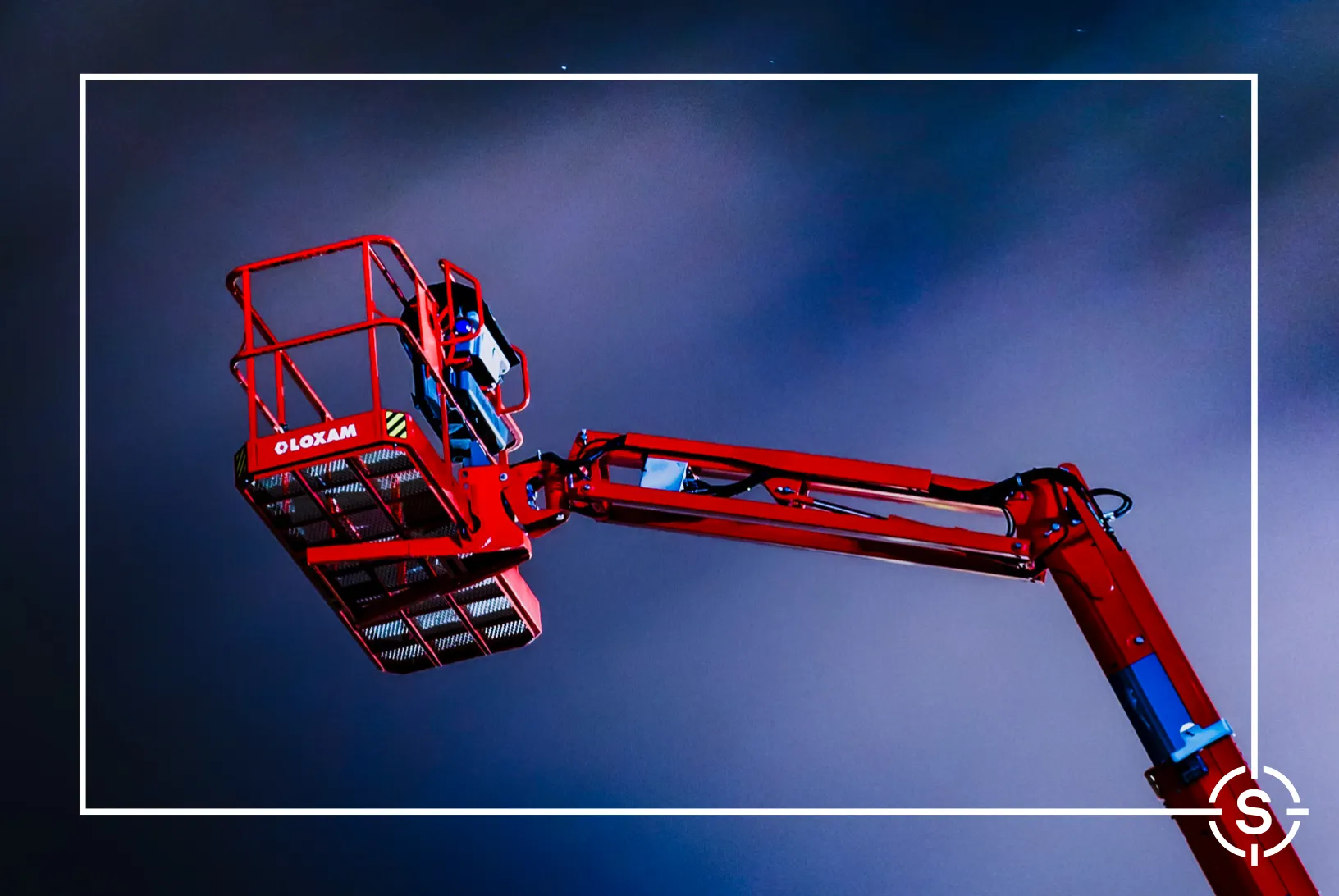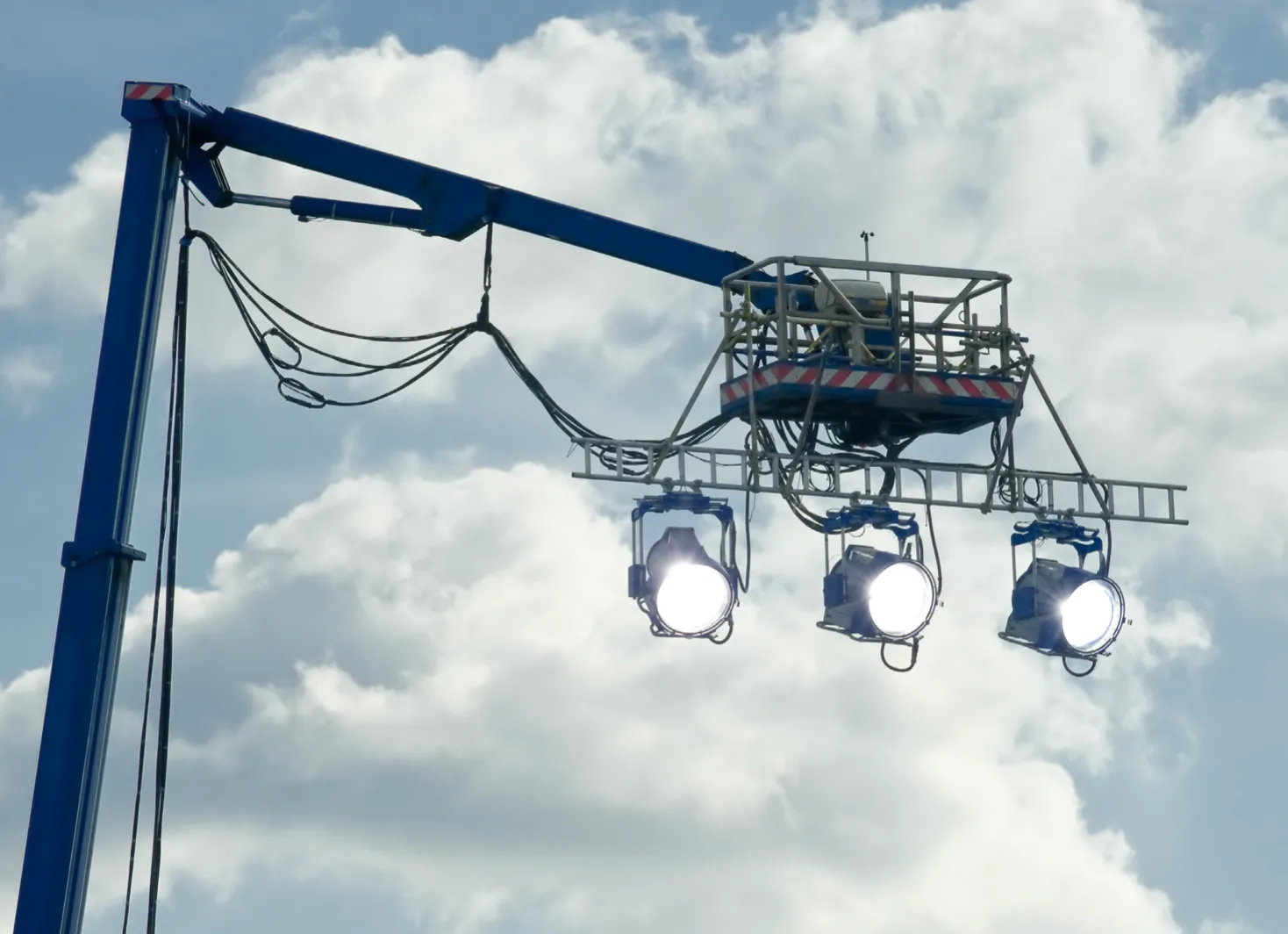Rigging
Ngā Aratohu Rikini

Rigging
This chapter relates to the chapter on working at heights and provides guidance on using rigging on a production set. It is primarily based on New Zealand legislation and guidance issued by WorkSafe NZ.
Who needs to read this?
All workers who use rigging equipment should read and understand the section of minimum responsibilities.
Roles that have specific responsibilities over setting up and managing rigging equipment should read and understand the planning and considerations section – this includes Producers, Directors, Production Managers, Heads of Departments, Assistant Directors and Health and Safety Officers.
What does rigging include?
Rigging on a production set includes:
- the use of mobile powered cranes and elevating equipment, excluding camera cranes;
- camera rigs including car rigs;
- lighting rigs including soft boxes for night shooting;
- construction rigs for sets; and
- scaffolding, which is covered in a separate section.
Definitions
Mobile powered cranes and elevating equipment includes but is not limited to cherry pickers, scissor lifters and mobile cranes; it excludes camera cranes, which are covered with in a separate section: Camera - cranes.
What risks do I need to look out for?
- Crane tipping over
- Electric cables and wires
- Incorrect assembly
- Overhead obstructions
- Struck by crane
- Structural collapse of crane
- Wind
Minimum Responsibilities for Rigging
Everyone who undertakes tasks using rigging, including mobile-powered cranes and elevating platforms, should read and understand the section.
Workers should:
- only operate the equipment if they are competent;
- only operate the equipment in accordance with the operating instructions and appropriate codes of practice;
- ensure the safe working load of equipment is not exceeded;
- wear a safety harness where directed;
- use seats provided where practical;
- fill out log books supplied with machinery; and
- understand the fundamentals of safe rigging.

Fundamentals of Rigging Safety
No rigging should be undertaken unless it can be done in a way that protects people from danger.
For a rig to be safe it must have the following five elements:

*ref: FilmSkills, Production Safety, Series: FilmSkills: Behind the Screen,
Publisher: CreateSpace Independent Publishing Platform; 1 edition (August 12, 2015), ISBN-10: 1514627957/ ISBN-13: 978- 1514627952
Planning and Guidance Considerations
Everyone who is responsible for, or has influence over, an activity or task in relation to setting up and managing rigging should read and understand this section, as well as the minimum responsibilities section, in particular the fundamentals of safe rigging.
Producer / Production Manager
The Producer / Production Manager, as the person ultimately in charge of the task, should:
- consult with heads of department as to the adequacy of any specific equipment to be used for a particular task taking into account the conditions; and
- specify, in consultation with head of departments, who oversees rigging work on the production set.
Person in charge
The person in charge of rigging will depend on the size of the production, and the responsibilities may be split between multiple people.
The Producer or Production Manager should specify, in consultation with head of departments, who is in charge of rigging on the production set.
Mechanical Access Plant
The person in charge should consider:
- the surface – some mechanical access plant are designed for flat surfaces, while others are designed for operating on uneven ground;
- an appropriate communications system for those operating the mechanical access plant; and
- any potential overhead obstructions.
Mobile Elevating Work Platform
Mobile elevating work platforms (MWEPs) include cherry pickers, scissor lifts, hoists and travel towers.
Anyone, including the PCBU or a supervisor, who asks someone to use a MEWP, must make sure that the operator is adequately trained by a competent person and can demonstrate their competency before using any equipment.
The person in charge should ensure the MEWP:
- safe working load of equipment is not exceeded – calculating all factors that may affect the load including lighting equipment, and the number and weight of workers;
- is clearly marked with the rated lifting capacity;
- has been inspected and tested within the previous six months;
- has a current six-monthly inspection certificate displayed;
- does not create further risks – for example the boom will not swing out into the path of other vehicles;
- is not be overloaded or used as a crane; and
- operating and maintenance manual is available for use.
The person in charge should also:
- ensure risks associated with power lines are considered and appropriately controlled;
- ensure the area covered by the swing of the arms is a limited access area;
- instruct workers to use a safety harness or belt and restraint where practical;
- ensure operators of boom-style MEWPs wear a safety harness with a lanyard incorporating a short energy absorber attached to a certified anchor point.
Further information about the safe use of MEWPs is provided in the AS 2550.10 Cranes, hoists and winches – Safe use – Mobile elevating work platforms.
Knuckle Boom
A knuckle boom has a second articulated joint pathway along the arm to allow for extra flexibility and reach for the work platform.
Minimum Clearance from Overhead Electric Power Lines
There are minimum clearances from overhead conductors depending on their voltages.
The Producer/Production Manager or Head of Department or delegated representative should consult with the local power supplier in each case.
Otherwise, maintain a minimum of four metre clearance between the crane including any person or equipment on it, the swing of the arms, and the overhead conductors.
New Zealand Electrical Code of Practice for Electrical Safe Distances
Training and qualifications
The PCBU, likely to be the production company, must ensure that it if there are specific regulations or training requirements / qualifications that these are adhered to.
If there is not a specific regulation or training requirement, the PCBU must ensure workers are either sufficiently competent to do their work or are adequately supervised by an experienced person, as well as adequately trained in the safe use of equipment in the workplace.
Scaffolding
Any anyone responsible for managing, setting up or using scaffolding should read the ScreenSafe chapter on scaffolding and WorkSafe guidelines on scaffolding, including the specific section on training.
Elevated Working Platforms
The person in charge must ensure the operator:
- gets training on the type of MEWP they will be using; and
- is supervised during the training period until the person is considered competent to operate the MEWP.
For the purposes of operating a MEWP, a competent person is a person who has achieved and demonstrated competency in the safe use of a particular type of MEWP; this may include completing nationally recognised MEWPs NZQA unit standard or an equivalent or higher qualification.
Forklifts
The operator must follow the Approved Code of Practice for Training Operators and Instructors of Powered Industrial Lift Trucks (Forklifts).
Harness Work
For workers who are to complete basic work while under total restraint, a recommended means of achieving competence is NZQA Unit Standard 23229 – Use a safety harness for personal fall prevention when working at height, or an equivalent or higher qualification.
A recommended means of obtaining competence for workers who are involved in planning, installing, operating fall arrest systems and supervising staff is NZQA Unit Standard 15757 – Use, install and disestablish proprietary fall arrest systems when working at height or an equivalent or higher level of qualification. NZQA Unit Standard 23229 is a prerequisite for achieving NZQA Unit Standard 15757.
Further reading
Safe Rigging Practices for the Entertainment Industry in New Zealand; Entertainment Technology New Zealand Incorporated; June 2015

